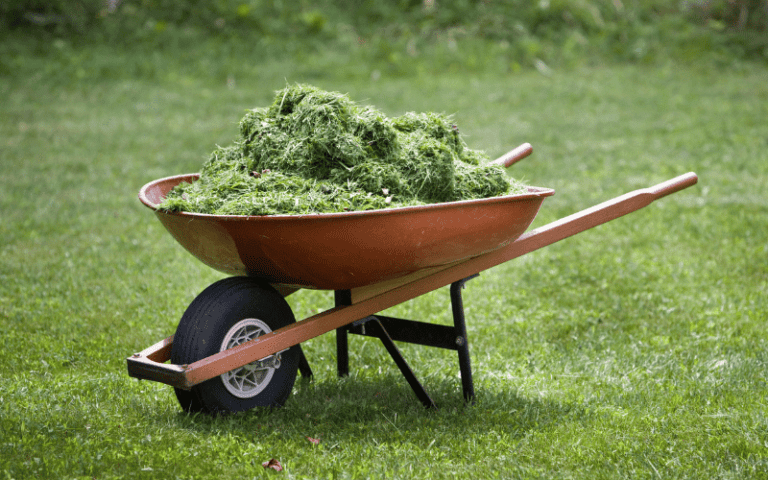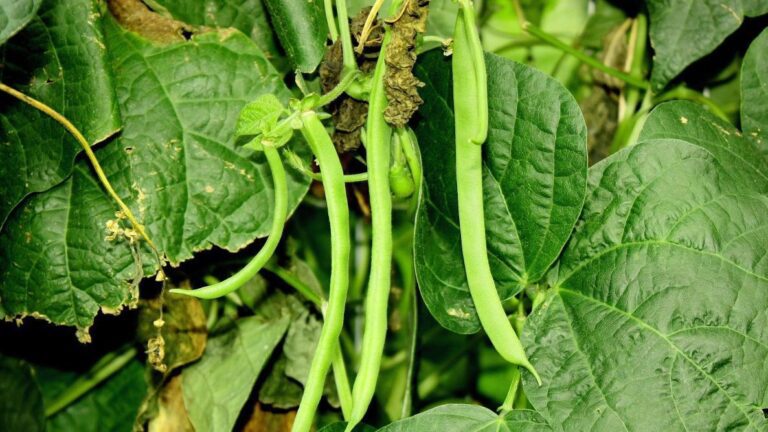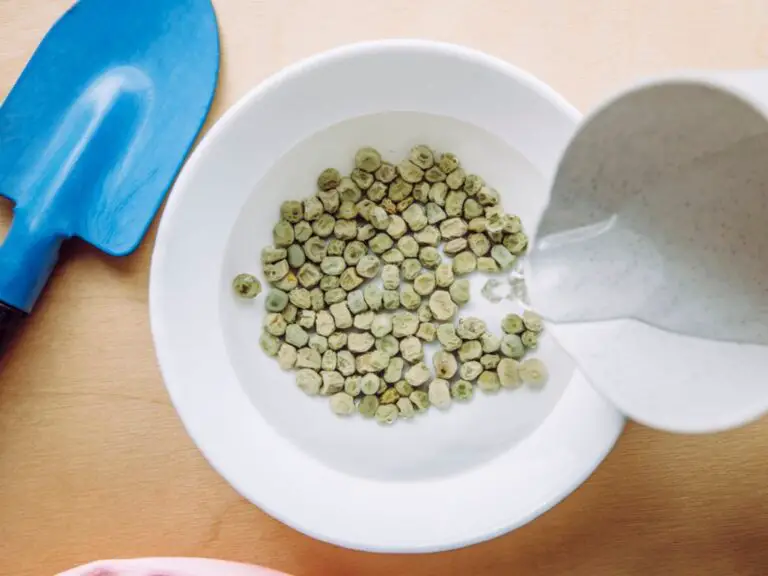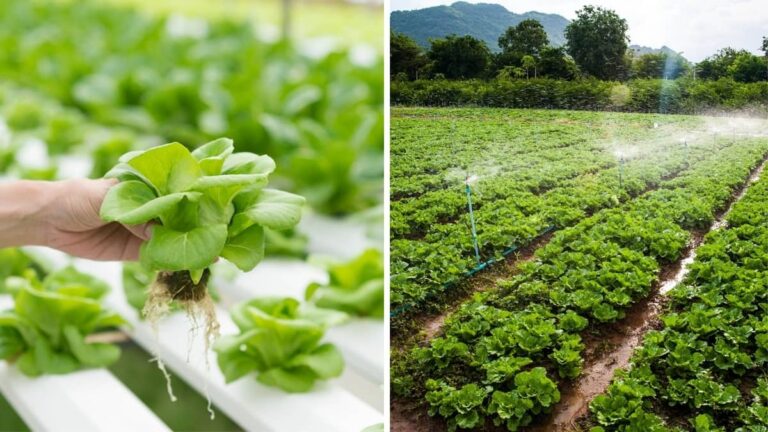How to Treat Plant Fungus with Baking Soda
Table of Contents
Identifying Common Types of Plant Fungus
Fungal infections can be a common and frustrating issue for many gardeners. Identifying the specific type of plant fungus is crucial in determining an effective treatment plan. There are several common types of plant fungus that gardeners should be aware of.
One common type of plant fungus is powdery mildew, which appears as a white or gray powdery coating on the leaves, stems, and flowers of plants. It thrives in warm and humid conditions, making it especially prevalent in late summer and early fall. Another common type is leaf spot, characterized by dark or discolored spots on the leaves. This fungus tends to thrive in wet and humid conditions, especially when plants are overcrowded.
It is also important to be on the lookout for black spot, a fungal infection that affects roses and other plants. Black spot appears as black or dark brown spots on the leaves, eventually causing them to yellow and drop off. Another common type of plant fungus is rust, which appears as orange or brown pustules on the undersides of leaves. Rust is most commonly found on roses, as well as in cool and humid conditions.
By understanding and identifying these common types of plant fungus, gardeners can take preventative measures and develop effective treatment strategies. Early detection is key to successfully combatting these infections and ensuring the health and vitality of your plants.
Recognizing the Symptoms of Plant Fungus
Plant fungus can have a detrimental effect on the health and appearance of your plants, making it crucial to recognize the symptoms early on. One common sign of plant fungus is the presence of powdery white or gray spots on the leaves, stem, or flowers. These spots, known as powdery mildew, are caused by fungal spores and can gradually spread if not addressed promptly. Another noteworthy symptom is the appearance of discolored or yellowing leaves, which may be accompanied by dark patches or spots. This could be an indication of various fungal infections, such as leaf spot disease or rust. Additionally, you may notice a fuzzy or velvety growth on the affected parts of the plant, indicating the presence of mold or other fungal pathogens.
It’s important to pay close attention to any changes in the overall appearance or texture of your plants. Wilting or drooping leaves, stunted growth, and the development of unusual bulges or lesions are all potential indicators of plant fungus. Some fungal infections can also cause a foul odor, especially when they affect the roots or soil. By staying vigilant and regularly inspecting your plants, you can catch these symptoms early on and take the necessary steps to combat the fungus before it spreads and causes further damage.

Exploring the Benefits of Using Baking Soda as a Treatment
Using baking soda as a treatment for plant fungus offers a range of benefits that make it an effective and popular choice among gardeners. One of the key advantages of baking soda is its affordability and accessibility. Unlike many commercial fungicides, baking soda is readily available in most households and can be easily obtained from local stores at a fraction of the cost.
Another benefit of using baking soda is its natural composition, making it an eco-friendly option for treating plant fungus. Unlike chemical-based fungicides that may harm the environment and potentially affect the health of your plants, baking soda is non-toxic and poses minimal risk to the ecosystem. This makes it an ideal choice for gardeners who prioritize sustainability and want to minimize their environmental footprint.
In addition to its affordability and environmental friendliness, baking soda has been proven to effectively combat a wide range of plant fungal infections. It works by altering the pH level on the leaves and inhibiting the growth of fungi. Numerous studies have shown the antifungal properties of baking soda, making it a reliable and science-backed solution for treating and preventing fungal diseases in plants.
By considering these benefits, it’s clear that baking soda is a valuable tool for gardeners seeking a cost-effective, environmentally-friendly, and scientifically-proven treatment for plant fungus. Incorporating baking soda into your plant care routine can help ensure the health and vitality of your plants, all while supporting sustainable gardening practices.
Examining the Science Behind Baking Soda’s Antifungal Properties
Baking soda, also known as sodium bicarbonate, is a common household ingredient with remarkable antifungal properties. Numerous studies have investigated its efficacy in combating plant fungus, revealing its potential as an effective treatment option.
The antifungal properties of baking soda can be attributed to its ability to disrupt the cellular pH balance of fungi. Fungal cells typically thrive in an acidic environment, but baking soda creates an alkaline environment that inhibits their growth. This alteration in pH levels interferes with crucial metabolic processes, ultimately leading to the inhibition or eradication of fungal infections.
Research conducted by scientists at the University of California, Riverside, demonstrated that baking soda effectively suppressed powdery mildew, a common fungal disease that affects a wide range of plants. The study found that a diluted baking soda solution, when applied regularly to affected plants, significantly reduced the severity and spread of the disease. The antifungal effects of baking soda were particularly pronounced when combined with lightweight horticultural oils, ensuring enhanced efficacy.
While further research is still needed to fully understand the mechanism of baking soda’s antifungal action, its potential as a natural and accessible treatment option for plant fungus is undeniable. By exploring the science behind baking soda’s antifungal properties, we can harness its potential to protect our beloved plants and promote thriving gardens.
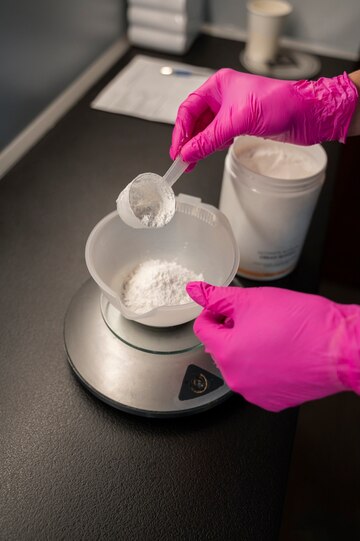
Preparing Baking Soda Solutions for Effective Treatment
Preparing Baking Soda Solutions for Effective Treatment
When it comes to treating plant fungus with baking soda, the preparation of the solution is crucial for achieving effective results. To ensure the potency and effectiveness of your baking soda solution, it is important to follow the proper preparation techniques.
Start by mixing a tablespoon of baking soda with a gallon of water. It is essential to dissolve the baking soda completely to avoid any residue or clumping. This can be achieved by stirring the mixture vigorously until the baking soda is fully dissolved.
Once the baking soda is dissolved, transfer the solution to a clean and labeled spray bottle for easy application. It is recommended to use a spray bottle with a fine mist setting to ensure an even distribution of the solution on the affected plants.
Remember, the baking soda solution should be applied directly to the foliage and affected areas of the plants, as this is where the fungi tend to dwell. Avoid spraying the solution on the soil, as it may disrupt the natural balance of beneficial microbes.
By following these simple steps for preparing your baking soda solution, you are setting yourself up for effective treatment of plant fungus. However, it is important to note that consistency in application and adherence to appropriate timing and frequency are equally vital for optimal results.
Ensuring Proper Application Techniques for Optimum Results
Proper application techniques are essential to ensure optimum results when using baking soda as a treatment for plant fungus. To begin, it is important to note that baking soda should only be applied to plants during cooler parts of the day, such as early morning or late evening, as high temperatures may cause plant stress. The first step in the application process is to prepare a baking soda solution by combining one tablespoon of baking soda with one gallon of water. This solution should be thoroughly mixed to ensure the baking soda is fully dissolved.
Once the solution is prepared, it should be applied to the affected plants using a spray bottle or a garden sprayer. It is crucial to ensure proper coverage of all plant surfaces, including the tops and bottoms of leaves, stems, and any visible signs of fungal infection. Care should be taken to avoid oversaturation, as excess moisture can create a favorable environment for fungal growth. To achieve optimum results, it is recommended to spray the baking soda solution on a regular basis, every 7 to 14 days, depending on the severity of the fungal infection and the plant species being treated.
Remember, when using baking soda as a treatment for plant fungus, consistency is key. Regular and thorough application, following the proper techniques, will increase the effectiveness of this natural remedy. With patience and diligence, you can effectively combat plant fungus and promote the overall health and resilience of your plants.
Certainly! Here’s a table outlining proper application techniques for optimum results in various contexts:
| Context | Application Techniques |
|---|---|
| Gardening and Fertilization | – Even Distribution: Apply fertilizers evenly across the soil or growing medium. – Avoid Root Contact: Keep fertilizers away from plant roots to prevent burning. – Follow Instructions: Read product labels and follow recommended dosages. – Timing: Apply fertilizers during active growth periods. |
| Pesticide and Herbicide Use | – Targeted Application: Apply pesticides or herbicides directly to affected areas. – Safety Measures: Wear protective gear (gloves, goggles). – Avoid Windy Days: Apply on calm days to prevent drift. – Follow Guidelines: Adhere to recommended application rates and intervals. |
| Painting and Coating | – Surface Preparation: Clean, sand, and prime surfaces before painting. – Brush Techniques: Use long, even strokes. – Roller Techniques: Roll in a “W” or “M” pattern. – Spray Techniques: Maintain consistent distance and overlap strokes. – Drying Time: Allow proper drying between coats. |
| Skincare and Cosmetics | – Clean Skin: Wash face before applying skincare products. – Layering Order: Apply thinner products first (serums, toners). – Sunscreen: Apply sunscreen generously and reapply as needed. – Makeup Blending: Blend foundation, eyeshadow, and blush seamlessly. – Patch Test: Test new products on a small area first. |
Understanding the Importance of Consistency in Treatment
Consistency is key when it comes to effectively treating plant fungus with baking soda. In order to achieve optimum results, it is important to maintain a regular treatment schedule and adhere to the recommended application techniques.
Plant fungi can be persistent and may require multiple treatments over a period of time to completely eradicate. By consistently applying baking soda solutions to the affected plants, you can disrupt the fungal growth cycle and prevent further spread.
It is important to note that consistency is not only about the frequency of treatment, but also about the application technique. Ensuring proper coverage of the affected areas and following the recommended dilution ratios will help maximize the effectiveness of the baking soda treatment.
By consistently treating your plants with baking soda, you are providing them with the best chance of overcoming fungal infections. Remember, patience and dedication are key when it comes to combating plant fungus, and a consistent treatment approach will lead to healthier and more vibrant plants in the long run.
Exploring Additional Natural Ingredients to Enhance Baking Soda’s Effectiveness
When it comes to treating plant fungus, baking soda has proven to be a reliable and effective remedy. However, there are additional natural ingredients that can be used to enhance the effectiveness of baking soda and further improve the treatment process. These ingredients have their own antifungal properties and can work in synergy with baking soda to provide better results.
One such ingredient is neem oil, derived from the seeds of the neem tree. Neem oil contains azadirachtin, a compound that exhibits potent antifungal properties. When used in combination with baking soda, neem oil can help suppress the growth of plant fungus and prevent its spread. Additionally, neem oil has insecticidal properties and can act as a preventive measure against pests that may contribute to fungal infections.
Another natural ingredient that can complement the use of baking soda is garlic. Garlic, known for its strong aroma and taste, also possesses antifungal properties. Allicin, a compound found in garlic, has been shown to have inhibitory effects on various types of plant fungus. By incorporating garlic into the treatment regime, you can boost the antifungal properties of baking soda and provide your plants with an extra layer of protection.
Incorporating these natural ingredients into your baking soda treatment can help maximize the effectiveness of your efforts. However, it is important to note that the ideal ratios and application methods may vary depending on the specific plant fungus you are dealing with. It is always recommended to consult with a gardening expert or seek professional advice to ensure the best results and prevent any potential risks.
• Neem oil, derived from the neem tree seeds, contains azadirachtin which has potent antifungal properties.
• Neem oil can be used in combination with baking soda to suppress plant fungus growth and prevent its spread.
• Neem oil also acts as an insecticide, providing additional protection against pests that may contribute to fungal infections.
• Garlic possesses antifungal properties due to the compound allicin found in it.
• Incorporating garlic into the treatment regime enhances the antifungal properties of baking soda and provides extra protection for plants.
• It is important to consult with a gardening expert or seek professional advice for ideal ratios and application methods based on specific plant fungus.
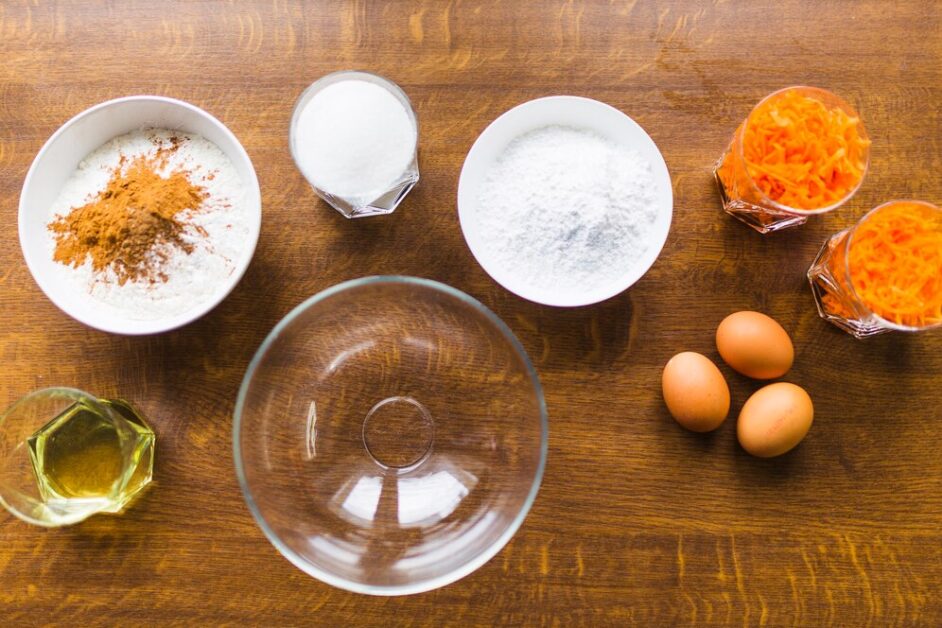
Considering the Potential Risks and Precautions of Using Baking Soda
Baking soda is a widely used natural remedy for various ailments, including plant fungus. However, it is essential to consider the potential risks and take necessary precautions before using baking soda as a treatment. While baking soda is generally safe for plants, there are a few factors to keep in mind.
Firstly, it is crucial to understand that baking soda can alter the pH levels of soil. Most plants thrive in a slightly acidic or neutral pH range, and a significant shift towards alkalinity can adversely affect their growth and nutrient uptake. Therefore, it is recommended to conduct a soil pH test before applying baking soda, especially if you are uncertain about the current pH levels.
Secondly, some plants may be more sensitive to baking soda than others. Certain species, such as geraniums and begonias, are known to be more susceptible to baking soda’s alkaline nature. If you are planning to treat delicate or sensitive plant varieties, it is advisable to start with a lower concentration of baking soda and monitor their response closely. In case of any adverse effects, discontinue the treatment immediately.
It is crucial to note that baking soda should be used as a preventive or early treatment measure. Once plant fungus has established itself extensively, baking soda may not be as effective in eradicating the infection. Additionally, excessive use or repeated applications of baking soda can lead to salt buildup in the soil, affecting the overall health of the plants. Therefore, it is essential to use baking soda judiciously and follow the recommended dosage and frequency guidelines.
Certainly! Here’s a table outlining the potential risks and precautions associated with using baking soda:
| Risk or Precaution | Description |
|---|---|
| Poisoning | – Baking soda, or sodium bicarbonate, can neutralize excess stomach acid and provide temporary relief from indigestion. However, using large amounts of baking soda as a home remedy can be risky. – Overconsumption can cause digestive discomfort and, in extreme cases, poisoning due to its high sodium content. – Symptoms may include diarrhea, vomiting, dehydration, seizures, kidney failure, and slow breathing. If poisoning is suspected, call Poison Control at 800-222-1222. |
| Ruptured Stomach | – Mixing baking soda with an acid (such as stomach acid) can lead to gas production. In rare cases, excessive gas accumulation in the stomach may cause it to rupture. – This risk is higher after consuming large amounts of food or alcohol. |
| Toxicity in Children | – Parents or caregivers should avoid giving baking soda or any medications containing sodium bicarbonate to children. – Early symptoms of an overdose may include diarrhea and vomiting. |
| Interference with Medications | – Baking soda can affect how the body absorbs medications. Depending on the specific medication, adverse effects may occur. – It’s safer to use over-the-counter indigestion products like Tums rather than homemade remedies. – Adults (not pregnant) can mix about half a teaspoon of baking soda with at least half a cup of water for temporary indigestion relief. |
Remember to use baking soda in moderation and be aware of these potential risks.
By understanding and considering these potential risks and taking necessary precautions, you can optimize the effectiveness of baking soda as a treatment for plant fungus. However, if you have persistent or severe fungal infections, it is advisable to seek professional advice from a horticultural expert or plant disease specialist. They can provide tailored recommendations based on your specific situation and offer alternative methods or treatments if necessary.
Determining the Ideal Timing and Frequency for Treatment
Determining the ideal timing and frequency for treatment is crucial when using baking soda to combat plant fungus. Timing plays a significant role as it determines the effectiveness of the treatment and ensures that the plant’s growth cycle is considered.
First, it is important to understand the life cycle of the fungus you are dealing with. Different types of fungi have varying periods of activity and vulnerability. By identifying the specific fungus affecting your plants, you can determine the most vulnerable stages in its life cycle and target your treatment accordingly. This will maximize the effectiveness of the baking soda treatment and minimize the chances of reoccurrence.
Additionally, the frequency of treatment should be carefully considered. While baking soda is generally safe for plants, excessive use may lead to undesirable effects, such as altering the pH of the soil. It is recommended to follow the guidelines provided by experts, which typically suggest applying baking soda solutions every 7 to 14 days. However, it is crucial to evaluate the progress of your treatment and adjust the frequency accordingly. Monitoring the plant’s response to the treatment will help you determine if more frequent or less frequent applications are necessary for optimal results.
Determining the ideal timing and frequency for treatment requires a balance between effectively controlling the fungus and avoiding any negative effects on the plants. By considering the life cycle of the fungus and closely monitoring the plant’s response, you can develop a treatment schedule that promotes plant health while effectively combating the fungal infection.
Examining the Role of Environmental Factors in Plant Fungus Prevention
Examining the Role of Environmental Factors in Plant Fungus Prevention
When it comes to preventing plant fungus, understanding the role of environmental factors is crucial. Environmental conditions can greatly influence the growth and spread of fungal infections in plants. By identifying and managing these factors effectively, you can significantly reduce the risk of fungal outbreaks in your garden.
One key environmental factor to consider is humidity. Fungi thrive in moist environments, making it essential to maintain proper humidity levels in your garden. High humidity promotes fungal growth, while low humidity can hinder the spread of spores. To prevent excessive moisture, make sure your plants have adequate spacing and good air circulation. Additionally, avoid overwatering and provide proper drainage to prevent waterlogged soil.
Another important environmental factor is temperature. Different fungi have different temperature preferences, so maintaining the optimal temperature range for your plants can help prevent fungal infections. Research suggests that some fungi thrive in temperatures between 70°F to 85°F, while others prefer cooler conditions. Regularly monitoring and maintaining appropriate temperature levels for your specific plant species can help create an unfavorable environment for fungal growth.
In conclusion, understanding the role of environmental factors in plant fungus prevention is essential for maintaining the health and vitality of your garden. By carefully managing humidity and temperature levels, you can create an environment that discourages fungal infections. However, it’s important to note that these are just a few of the environmental factors that influence plant fungi, and there may be other factors specific to your garden that need to be considered. By continuously monitoring and adapting to the conditions in your garden, you can effectively prevent fungal outbreaks and ensure the success of your plants.

Implementing Proper Hygiene Practices to Minimize Fungal Growth
Maintaining proper hygiene practices is essential for minimizing fungal growth in plants. By following a few simple steps, you can significantly reduce the risk of fungal infections and ensure the overall health of your plants.
First and foremost, it is crucial to regularly clean your gardening tools and equipment. Fungal spores can easily attach themselves to these surfaces and spread to your plants. Clean your tools with a mixture of diluted bleach or hydrogen peroxide, ensuring that all visible soil and debris are removed. This practice will help prevent the introduction and spread of fungal pathogens.
Another important aspect of proper hygiene is keeping your garden area clean and free from debris. Remove fallen leaves, dead plant material, and any other organic matter that can serve as a breeding ground for fungal growth. Additionally, regularly inspect your plants for any signs of infection, such as discolored or wilting leaves, and promptly remove and dispose of any infected plant parts to prevent further spread.
By implementing these proper hygiene practices, you can create an environment that is less conducive to fungal growth. This, in turn, will help protect your plants from potential infections and promote their overall health and vitality.
Monitoring and Assessing the Progress of Baking Soda Treatment
Once you have implemented baking soda treatment for plant fungus, it is important to monitor and assess the progress to ensure its effectiveness. Monitoring the progress of treatment involves regularly observing the affected plants and noting any changes in their condition. This can include checking for the reduction of fungal symptoms, such as discoloration, wilting, or the appearance of new growth. Additionally, you should pay attention to the overall health and vigor of the plants, as this can be an indication of successful treatment.
To assess the progress of baking soda treatment, you can compare the current condition of the plants to their initial state before the treatment was applied. This evaluation can be done through visual inspection or by documenting the changes using photographs. Keeping detailed records of the treatment process, including dates, application techniques, and any observations made, can help you track the progress more effectively.
It is important to note that the effectiveness of baking soda treatment may vary depending on the severity of the fungal infection and other factors such as environmental conditions. Some fungal infections may require multiple treatments or additional interventions to completely eradicate the fungus. If you do not observe significant improvement in the affected plants’ condition after a reasonable period of time, it may be beneficial to seek professional advice from a horticulturist, plant pathologist, or gardening expert.
Exploring Alternative Methods to Complement Baking Soda Treatment
When it comes to treating plant fungus, baking soda is often touted as an effective solution. However, there may be times when alternative methods can be used to complement the use of baking soda. One such method is the use of neem oil.
Neem oil is derived from the seeds of the neem tree and has been used for centuries in traditional medicine and agriculture. It has antifungal properties that can help inhibit the growth of various types of plant fungus. To use neem oil as a complement to baking soda treatment, mix it with water according to the instructions on the label and apply it to the affected plants using a spray bottle. This combination of baking soda and neem oil can effectively combat plant fungus and provide an extra layer of protection.
Another alternative method to consider is the use of hydrogen peroxide. Hydrogen peroxide has been used as a disinfectant and antifungal agent in various applications. When used in gardening, it can help eliminate fungal spores and prevent their spread. To use hydrogen peroxide as a complement to baking soda treatment, mix one part hydrogen peroxide with three parts water and apply it to the affected plants. Be sure to only use a 3% hydrogen peroxide solution, as higher concentrations may damage the plants.
By exploring alternative methods such as neem oil and hydrogen peroxide, you can enhance the effectiveness of baking soda treatment and provide comprehensive care for your plants. However, it is important to note that these methods may not work for all types of plant fungus, so it is advisable to consult with a professional or do further research to determine the best approach for your specific situation.
Seeking Professional Advice for Persistent or Severe Fungal Infections
Seeking professional advice is crucial when dealing with persistent or severe fungal infections in your plants. While home remedies and treatments like baking soda can be effective in many cases, there may be situations where the expertise of a professional is necessary to address the issue effectively.
A professional, such as a plant pathologist or an experienced horticulturist, can provide valuable insights and diagnostic tools to accurately identify the specific type of fungus affecting your plants. They have the knowledge and expertise to analyze the symptoms, perform laboratory tests if needed, and determine the most appropriate course of action.
In cases where your plants continue to show signs of fungal infection despite your best efforts, consulting a professional is a wise decision. They can offer tailored solutions and recommend advanced treatments or strategies that may be required to combat stubborn or aggressive fungal pathogens. Remember, seeking professional advice demonstrates your commitment to the health and well-being of your plants and increases the likelihood of successful resolution.
Remember, treating plant fungus with baking soda requires patience and consistency. By following these comprehensive guidelines, you can effectively combat plant fungus and ensure the health and vitality of your plants.
Treating plant fungus with baking soda is a process that requires patience and consistency. While it may not provide immediate results, following these comprehensive guidelines can effectively combat plant fungus and ensure the health and vitality of your plants.
One of the key aspects of using baking soda as a treatment is understanding the importance of proper application techniques. It is crucial to prepare baking soda solutions correctly to maximize their effectiveness. Mixing baking soda with water and a small amount of liquid soap can create a potent antifungal solution. Ensuring the right concentration and applying it consistently to the affected areas can help eliminate the fungus and prevent its recurrence. Remember, timing and frequency are also vital factors to consider when applying the treatment.
Please do watch video for more information.
Can baking soda be used to treat all types of plant fungus?
Baking soda is effective against a wide range of plant fungi, but some strains may require additional treatments or professional advice.
How long does it take for baking soda treatment to show results?
The effectiveness of baking soda treatment varies depending on the severity of the fungus and the plant species. It may take several applications before visible improvements are seen.
Are there any risks or side effects associated with using baking soda for plant fungus?
Baking soda is generally safe to use, but it can cause leaf damage or other adverse effects if used in excessive concentrations or on sensitive plants. It is important to follow the recommended guidelines and precautions.
Can baking soda treatment completely eliminate plant fungus?
Baking soda can help control and reduce plant fungus, but complete elimination may not be possible. Regular maintenance and preventive measures are often necessary to manage fungal infections.
Can I combine baking soda treatment with other natural remedies?
Yes, certain natural ingredients like neem oil or garlic extract can be used in combination with baking soda to enhance its effectiveness. However, it is important to research and follow proper application methods.
How often should I apply baking soda treatment to my plants?
The frequency of application depends on the severity of the fungus and the specific plant species. Generally, regular treatments every 7-14 days are recommended until the fungus is under control.
Can environmental factors affect the effectiveness of baking soda treatment?
Environmental factors such as humidity, temperature, and air circulation can impact the growth and spread of plant fungus. It is important to create favorable conditions for the treatment to be more effective.
What hygiene practices should I follow to prevent fungal growth?
Regularly clean and disinfect gardening tools, remove dead plant material, and avoid overwatering or overcrowding plants to minimize the risk of fungal growth.
When should I seek professional advice for plant fungus infections?
If the fungus persists or becomes severe despite consistent baking soda treatment, it is advisable to consult a professional horticulturist or plant pathologist for a more targeted and expert approach.

Nicole Burke is a dynamic writer at SouthElMonteHydroponics, fueled by her passion for horticulture and environmental sustainability. Armed with a degree in Environmental Science from a renowned institution, Nicole’s expertise lies in hydroponic gardening, organic farming, and biodiversity conservation. Her insatiable curiosity and love for nature drive her to explore innovative techniques in hydroponics, seeking to revolutionize the way we grow crops in urban environments. Nicole’s writing reflects her deep commitment to promoting eco-conscious practices and fostering a deeper connection between humans and the natural world. Through her engaging storytelling, she inspires others to embrace sustainable living and harness the power of hydroponics for a greener future.

